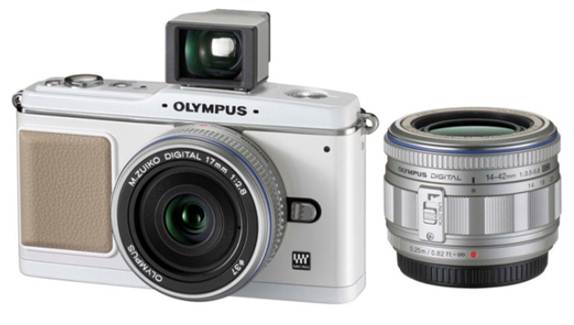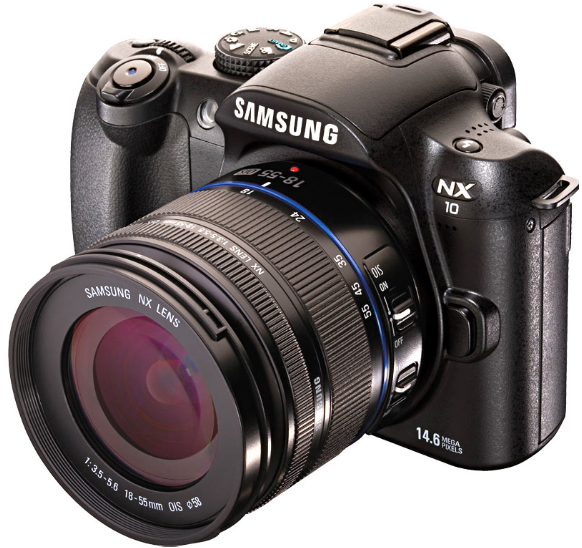A closer look at the mirrorless system
camera revolution
Everyone knows that a camera takes photographs.
For the casual shooter, there are the
digital compacts. DSLR (Digital Single Lens Reflex) cameras appeal to those looking
to get more serious about their photography. Let’s not forget the bridge camera
which offer more features and controls than a compact, but in a smaller package
when compared to a DSLR.
Years ago, if you were an aspiring
shutterbug, that meant investing in a SLR (Single Lens Reflex) camera. That
also meant investing in rolls of film and wasting many shots (as well as
spending a great deal of money developing film) as you perfected your craft.
Fast-forward to the 90’s, and digital SLRs
were beginning to replace their film-based counterparts. The ability to view
your shots right after they were taken was revolutionary, offering
photographers the means to immediately make the necessary adjustments in order
to take better photographs.
Even with improvements in camera
technology, DSLRs remained bulky and expensive. Camera manufacturers started
looking at other ways to bring together good image quality in a compact
package. The diminutive size of compacts restricted sensor sizes, which of
course meant mediocre image quality. While DSLRs housed larger sensor, the
bulkiness was something stopping the average consumer from hopping onboard.
Bridge cameras offered more features than a digital compact, but they had fixed
lenses, and sensor sixe remained a stumbling block to better image quality. A
new solution was needed, and the mirrorless system camera was born.
The mirrorless solution
In a way, the mirrorless system camera aims
to achieve balance between form and function. It houses a sensor that’s larger
than a digital compact, in a body much smaller than that od a DSLR. The
mirrorless camera system also offers more functionality and flexibility with
interchangeable lenses, something bridge cameras lack. The size reduction was
achieved by removing the mirror found in a DSLR body, which allowed for lenses
to be placed closer to the sensor (thus reducing thickness of the body), hence
the term “mirrorless”.
Introduced in 2008, the Micro Four Thirds
format was the first mirrorless camera system, created by two major camera
manufacturers, Olympus and Panasonic. Despite their relatively compact size,
the first few Micro Four Thirds cameras still managed to pack in sensors that
were roughly about nine times bigger than the sensor found in their compact
contemporaries.
Most importantly, the sensors in Micro Four
Thirds system cameras were only slightly smaller than those found in DSLRs with
APS-C sensors. As more camera manufacturers hopped onto the mirrorless system
camera bandwagon, the Micro Four Thirds system was joined by number of offering
price points along with sensors of varying sizes, with some mirrorless system
cameras housing APS-C sensors, something usually found in entry-level to
mid-range DSLRs.
The mirrorless system camera currently sits
in the niche market segment camera currently sits cameras, and has in fact
started encroaching on the higher-end digital compact camera segment, as well
as the entry-level DSLR segment. But how was it come to this?
For starters, the compact size of a
mirrorless system camera will definitely appeal to those upgrading from a
digital compact, but dislike lugging around a heavy DSLR.
2008 Panasonic Lumix DMC-G1

The Panasonic DMC-G1 was the world’s first
Mirco Four Thirds camera. Offering an electronic viewfinder and interchangeable
lenses in a camera body smaller than a traditional DSLR, the release of the G1
in late 2008 was an important milestone in the history of photography. The 12.1
– megapixel G1 had all the features of a DSLR, such as shooting in RAW and the
ability to manually set exposure modes and shutter speeds, despite handling
more like a digital compact camera.
2009 Olympus Pen E-P1

Olympus’s first Micro Four Thirds camera,
the E-P1 arrived not long after the release of the Panasonic G1 in mid-2009.
The E-P1’s design was similar to Olympus’s famous PEN half frame film cameras
from the past, and unlike the G1, did not feature an electronic viewfinder.
Instead, it used a 3-inch LCD rear display, similar to digital compact cameras.
The E-P1 had a 12.3 – megapixel sensor, and besides working with Micro Four
Thirds lenses, also allowed the use of Olympus’s OM Zuiko lenses which were
used on Olympus’s famous OM series film SLR cameras. Unlike the Panasonic G1,
the E-P1 included an in-body image stabilization unit, while the G1 depended on
lens-based stabilization instead.
2010 Samsung NX10

Samsung surprised many by becoming only the
third manufacture to come up with a mirrorless system camera. The NX10 was
Samsung’s first foray into the mirrorless system camera market, and it
differentiated itself from the Panasonic G1 and Olympus E-P1 by sporting an
APS-C – sized sensor. Instead of opting for the Micro Four Thirds standard, the
NX10’s APS-C sensor used Samsung’s proprietary NX mount, and also offered
better low-light performance due to its larger sensor. In addition, the NX10
looked more like a DSLR when compared to the G1 and E-P1, though still very
much compact.